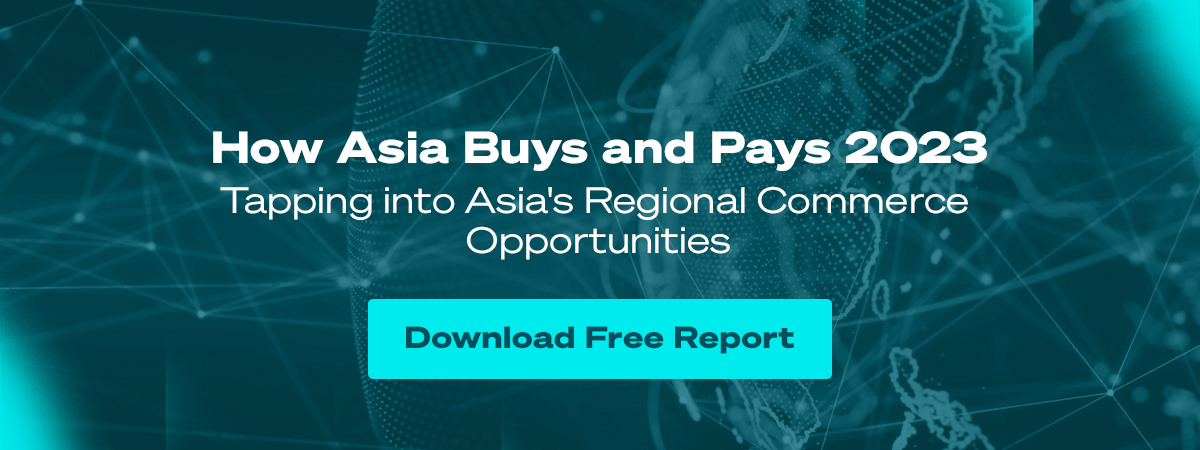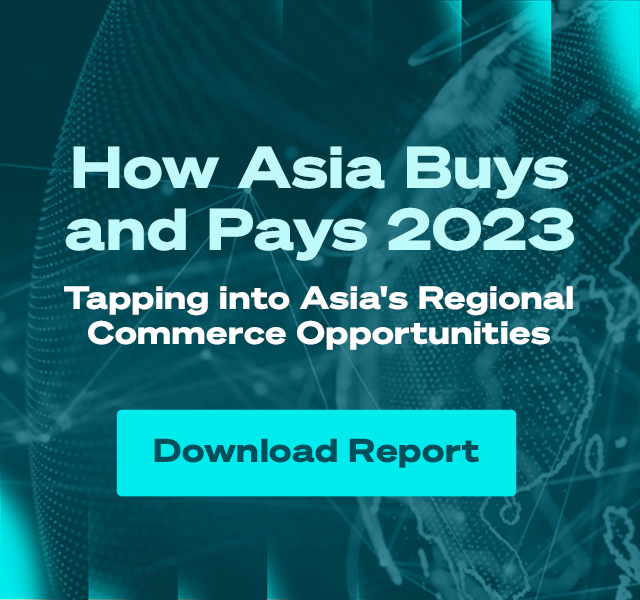
Payments Powerhouses: Adopting Digital Payments in Post-Pandemic Philippines
Jose Caesar Plofino, also known as Dax Plofino, is the Vice President of Metrobank Card Corporation.
An expert in banking and financial services in the Philippines, Dax has been at the forefront of creating digital payment solutions for Metrobank.
Hello Dax! How did you get started in the payments industry?
Dax Plofino: I started my career in the payments industry during a time when there were few alternatives available. Credit card usage is not common in the Philippines. Back when credit cards were first introduced, the average credit card usage was around 3 to 4 out of 10 people - a small proportion of the Philippine population.
E-commerce began in earnest in 2004 due to the airline industry. This is where things started picking up for us. With the growth of e-commerce, Metrobank also grew dramatically. Eventually, the rest of the airlines in the Philippines adopted e-commerce, followed by the retail sector. At this point, Metrobank shifted its focus to global payments.
Tell us about your role at Metrobank.
I joined Metrobank five years ago, and it was my first foray into a domestic bank. I handle global payments and merchant acquisition. Domestic banks are different from offshore banks in the sense that they have a good grasp of the market. While offshore banks may enjoy technological advancements and investments, they lack the domestic banks’ network and distribution capabilities.
Financial inclusion isn’t a big part of the Philippines, with the market primarily focused on the upper segments of society. Our society is also retail-oriented, with consumers performing numerous retail transactions daily.
In the last two years, Metrobank’s main focus was to convince the lower social segments to adopt digital banking. Recently, we’ve been looking into the implementation of QR payments, starting from a standardised pilot launch across all the Philippines’ banks.
In the Philippines, domestic banks used to have their own applications they wanted to secure. For example, they tried to establish a closed-loop where their retail customers also consult in their own capacity. But that's not working. So the only way to grow is through interoperability, which creates less dependence on cash. It's not meant to erode the credit card market but rather to grow the electronic transaction market.
How is Metrobank working to increase the adoption of digital payments in the Philippines?
Digital payments were practically unheard of in the Philippines until 10 years ago. The pandemic has significantly helped banks to drive digital payments forward. In my view, unless the situation is more synchronised, digital banking and payments will not go down the right path. Growth can’t take place unless the paradigm is changed. And now, the paradigm has shifted thanks to COVID-19, pushing people towards digital payments.
Retailers also have to start embracing the fact that digital payments are the way to go. Recently, retailers of appliances and computer products increasingly see the value of digital payments. As COVID-19 stopped people from visiting physical stores, retailers thus needed to adopt digital payments. However, their payment infrastructure was not ready for digital payments. Visit their websites, and you’ll discover that online purchases are not an option. Even though they have already adopted digital payments, they still need to upgrade their backend in terms of service provision, inventory upkeep, and delivery.
We've been trying to get larger companies to adopt digital payments for the past year and a half, but it’s been challenging. While fintechs like 2C2P are ready to provide the functionality, things just aren’t moving along as quickly as we’d like as the retailers aren’t fully prepared - COVID-19 was too unexpected for them.
What are banks and fintech companies doing to prepare retailers to accept digital payments?
There's little need for banks to encourage the businesses. As I said, the businesses themselves are motivated to adopt digital payments, especially informal retailers. When digital banking first started, there was a trust issue. During an online transaction in the past, sellers would have to receive a notification that funds had been credited to them before they could disburse the merchandise to their buyers.
Today, things are a lot faster. You don't even have to wait for a notification. What created friction and slowed operations have been eliminated, allowing for transactions to be completed faster.
Are consumers driving the push towards digital payments as well?
Yes! In the Philippines, it’s the older people who are driving this push. In the early stages of COVID-19, we observed many digital-illiterate older people approaching the younger folk for help with digital payments. We think that it’s because they want to protect themselves from contracting COVID-19 by avoiding the use of cash as much as possible.
With part of society turning towards digital payments, we're left with the low-income segment of society. For the low-income segment, adopting digital payments is challenging. This has a lot to do with them being on the move daily, which means that they always need to have cash on hand to adapt quickly to changes.
What do you think of the Philippines’ progress towards a cashless society?
While we have seen a lot of changes in the past two years due to COVID-19, things aren't developing as quickly as we'd like. Segments of society are not prepared for the changes, such as logistics. The Philippines are also not as regulated as other developed countries are. These factors mean that we are held back from progressing at a faster rate.
On a more positive note, we have seen a massive increase in the adoption of credit cards, debit cards, and other cashless payment methods. QR payments are all the rage now. GCash is a household term that we’ve known since 2004, but it only really gained traction in the last two years. Digital payments have benefited thanks to COVID-19 significantly.
Metrobank was named the best domestic bank by Asiamoney for “managing to thrive and grow in these unprecedented times”. What was Metrobank's COVID-19 strategy?
Without going into too much detail, our strategy was to return to basics and harness our strengths. Our initial move was to return to corporate banking. But we quickly changed our strategy as we saw that commerce didn’t cease during the pandemic; instead, it adapted to the change.
With commerce increasingly going down the digital route, we thus started projects aimed at growing and developing more digital products. More recently, we onboarded a dedicated senior officer to oversee the development of digital banking and other related products. You’ll see more of this from Metrobank over the next few months.
We do recognise that our competitors have already gone digital, even before COVID-19. It’s not easy to catch up, but we don’t believe in rushing - we want to plan properly and not just launch digital products haphazardly. While digital payments are undeniably here to stay, now it’s a matter of identifying our target market(s).
It's important to retain the businesses and trust of our merchants within our existing ecosystem. On the one hand, we keep our existing clients happy, and on the other, we show non-clients that Metrobank is a very good option against the competition.
How does Metrobank differentiate itself from competitors?
Metrobank has always been a very conservative bank - we have this imprinted on our roadmap itself. Regardless, we do have several plans in place to catch up with our digital-savvy competition. We're not that late to the game, and we’ve been aggressively building our electronic channels and options. We also have the support of all our stakeholders and owners.
What upcoming trend will most impact the payments space?
I believe QR payments will be a preferred payment method in the next 10 years, especially when you consider Asian interoperability. It’s already happening between Singapore and Hong Kong. While the Philippines does not have high foreign tourist arrivals compared to Indonesia or other developed Asian countries, we still have a few domestic destinations with plenty of growth potential.
When more people start to notice the Philippines, that's when more Asian tourists will arrive. This is when the interoperability of QR payments across the region will benefit us a lot.
What is Metrobank’s stance on cryptocurrency and CBDCs?
Metrobank is working on cryptocurrency very, very carefully. In fact, we do have some formal directives from compliance. Again, as before, the bank is still very conservative, especially with cryptocurrency. We want to see how the market receives it and whether we can tap on any potential. Personally, I feel that cryptocurrency is volatile, so I agree with Metrobank’s stance.
Finally, away from work, how do you like to spend your leisure time?
I do photography, and I've done it semi-professionally before. In terms of sports, I go biking almost every weekend. I also love to cook!
What’s your favorite Filipino dish?
Oh, there’s a lot that I love. There's kare-kare, there's sisig, and of course, there's adobo and lechon - all the things that are not good for your health!
. . .
Payments Powerhouses is a monthly editorial series interviewing the movers and shakers of the payments and wider fintech industry in Southeast Asia and beyond. If you’d like to be featured on Payments Powerhouses, reach out to us here.

